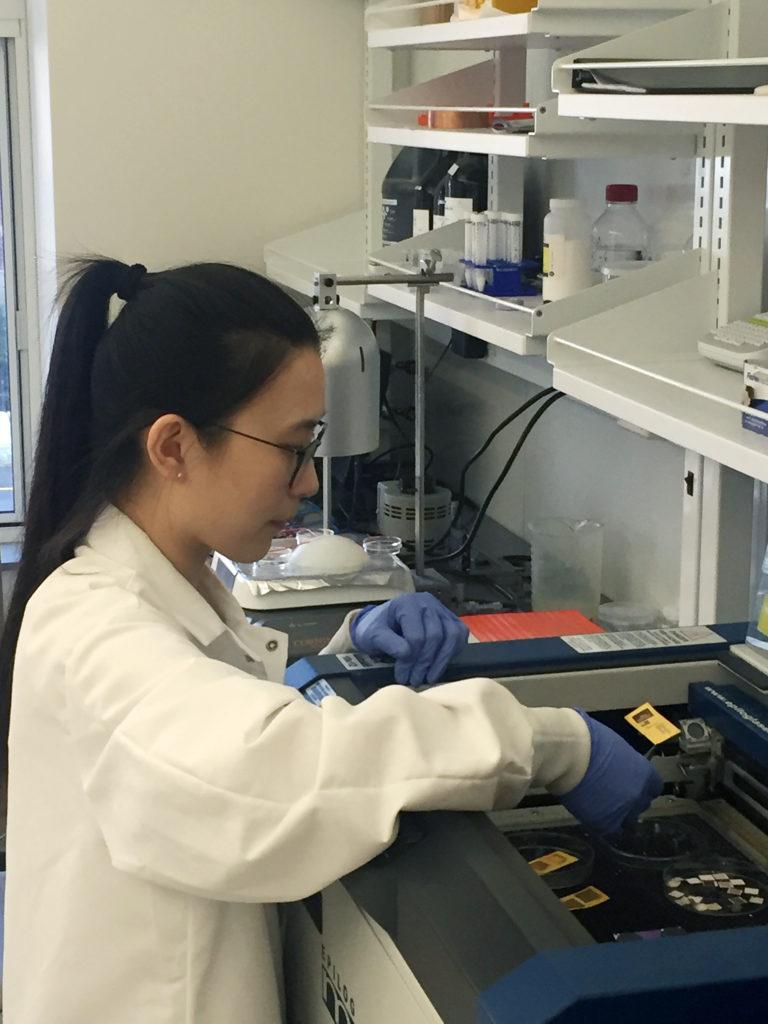By Max Schochet, news correspondent
A research team from Northeastern University has discovered an innovative and cost-effective way to clean up organic pollutants. Professor Ming Su of the college of engineering and two of his graduate students conducted a research study using a high-powered laser to decontaminate soil. Their findings were published last July in the Journal of Applied Physics,
“Our discovery will be helpful for the environment,” Su said. “The laser beam heats up the contaminated soil. The temperature is so high that the molecules immediately burn.”
The laser acts like a furnace, moving along the surface of the soil—burning and zapping the pollutant as it goes.
“We are excited by these results,” said Wenjun Zheng, a second-year graduate student studying chemical engineering and the lead author of the study. The research was part of her PhD project. “We raised the temperature of the soil to approximately 6000 degrees Celsius, which broke down the chemicals bonds of the contaminants.”
The team conducted the experiment in a two-step process. They first set up computer simulations using the program MATLAB, a software developed by MathWorks. Then they test their findings using a physical laser, a porous silica plate to replicate soil and Dichlorodiphenyldichloroethylene (DDE) to simulate the pollutant.
“We used the experimental and simulation results to actually try to find the optimal operating parameters for this laser and to predict the efficiency of different types of polluted soil,” said Sichao Hou, a third-year PhD student studying chemical engineering and a member of the research team.
Hou conducted 30 different computer simulations. By fine-tuning the laser, altering its speed, power and frequency and finding the best parameters, the team was able to completely eradicate the pollutant.
“You have different types of pollutants in your soil,” Hou said. “When we do the laser experiment on the soil, we can change the laser power and the laser speed to tell which condition is the best or most energy efficient.”
Organic pollutants like pesticides, industrial chemicals and unwanted by-products of manufacturing processes possess toxic properties and accumulate in the natural environment. Further adding to the problem is that the toxic by-products will accumulate in soil and move with underground water, which makes soil unsuitable for use, according to Zheng. Current clean-up methods are costly, laborious and cumbersome.
“Soil pollutants are a very big issue, especially for the United States, which is a very big agricultural country,” Hou said. “We did some literature review and found there were some methods like the burning or the washing of the soil to clean the soil. Actually, those methods are very energy consuming and time consuming.”
Currently, the laser is still at the laboratory level—that is, sitting on a tabletop. The next step is to build a working prototype.
“Our group is eager to move forward in soil decontamination using our methods and look for opportunities to bring the prototype to large scale,” Su said. “We proved the concept, I think the logical step now is try to make a larger scale laser scan-machine. We are in the process of setting up a small business so that we can commercialize this technology.”
Professor Su adds that, eventually, the next step is for a laser to scan agricultural fields. Future plans may involve a partnership with the Department of Energy or Environmental Protection Agency (EPA) to use the laser to detoxify superfund sites (a parcel of U.S. land that has been designated by the EPA as contaminated and a candidate for cleanup). Further testing will need to be done before the laser can target other pollutants, such as metals.
Another option, he said, is a plow-like device that is made of a bundle of lasers. This bundle would protrude from the side wall of the tractor. As you dig into the ground and move across the area, the laser would zap contaminates
“We need to set up a small business to install the laser on a mobile platform, for instance, on a small truck. Once we do that, we can attract more industry attention,” Su said.













